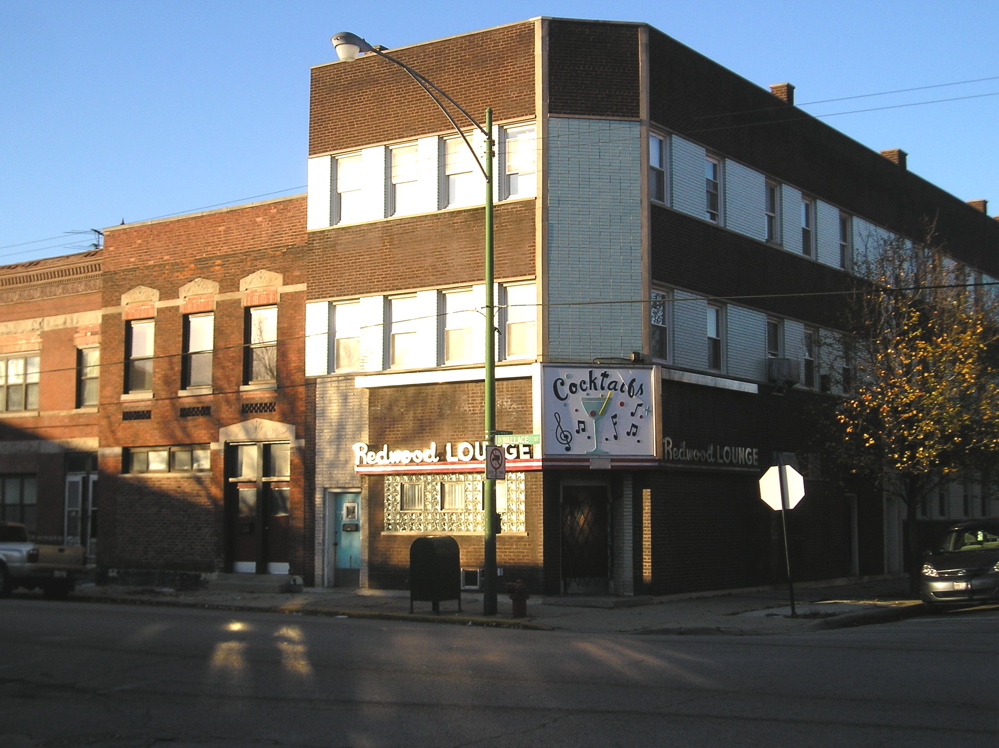


 |
|
Bridgeport Qua Bridgeport |

I’m posting a much briefer, bloggier entry in hopes of drawing readers’ attention to a smart, savvy, and important essay on Bridgeport, the heart of Chicago’s Southside: “Chicago’s Bridgeport neighborhood comes out as diverse,” posted on the True/Slant blog of journalist and University of Chicago lecturer Jeff McMahon. I agree with almost everything about this essay, including Jeff’s appraisal of both the artistic community (as represented by “Spencer Dew”) and big media’s trite, dismal, unimaginatively dismissive writing about Bridgeport. I remember a Chicago Tribune piece on the neighborhood during the White Sox’s 2005 World Series that mentioned the “wafts of marijuana smoke filling the air” of the nearby housing projects. Equally as overwrought as Dew’s pinwheel candy smell and equally as misleading.
The media have always painted Bridgeport with a singular, fat brush, even going so far as to occasionally toss out the appellation, “An Irish-Catholic neighborhood on Chicago’s south side,” though Bridgeport hasn’t been majority Irish Catholic since about 1900. In only slightly more nuanced tones, writing on the area will mention its “mix of European immigrant groups” in a way that belittles the differences between Irish, Polish, Italian, Lithuanian, many types of Slavs, whites from the Southern U.S., and the Chinese and Mexican populations that together make up the majority of Bridgeport’s population. The media and the uninformed speak in nostalgic revulsion of this historically “white-ethnic” neighborhood as though everyone there once wore a blue collar to work only to trudge home, beat their wives, and attend Catholic mass. And– shield your eyes and hike up your petticoats, ladies– that’s how it was In Old Chicago. Even when the neighborhood was decidedly working-class European, it harbored more than its fair share of oddballs. Two of my most vivid images of Bridgeport are: 1.Reading Samuel Beckett and listening to Bob Dylan, both for the first time, in the basement of some high school party with a friend of mine. 2. Stories and memories of my great uncle Eddie, an eccentric who made scrap-iron sculptures, grew his own food, painted as a hobby, and kept a copious collection of silk scarves. Now, he was an Eastern-European electrician who donned a blue jump suit every workday, but otherwise he wholly melts this sick myth the media gorges itself on whenever they evoke an imagined “Old Bridgeport” of the 60s, 70s, 80s, and early 90s. That’s the Bridgeport I remember and love, and the Chicago I remember and love. It’s the same with Old Clark Street, Old Marquette Park, Old Beverly, or Old River North– the Chicago most natives are genuinely nostalgic for is not some “hard-nosed”, wholly callous-crowned and hateful place. I’m not saying there wasn’t and isn’t some bigotry in Chicago, but the old Chicago that gentrification really threatens is a Chicago that harbors the self-taught artist, estate sale thrift shops, peg-board packed corner hardware stores, backyard gardens built from alley junk, sloppy neighborhood paper newsrooms, niche book and record resale stores– that menagerie of oddity that has made and will make this city an interesting place to live. It was there in Bridgeport 50 years ago, and is still there, in ways new and old, today. |















click to see who
MAKE Magazine Publisher MAKE Literary Productions Managing Editor Chamandeep Bains Assistant Managing Editor and Web Editor Kenneth Guay Fiction Editor Kamilah Foreman Nonfiction Editor Jessica Anne Poetry Editor Joel Craig Intercambio Poetry Editor Daniel Borzutzky Intercambio Prose Editor Brenda Lozano Latin American Art Portfolio Editor Alejandro Almanza Pereda Reviews Editor Mark Molloy Portfolio Art Editor Sarah Kramer Creative Director Joshua Hauth, Hauthwares Webmaster Johnathan Crawford Proofreader/Copy Editor Sarah Kramer Associate Fiction Editors LC Fiore, Jim Kourlas, Kerstin Schaars Contributing Editors Kyle Beachy, Steffi Drewes, Katie Geha, Kathleen Rooney Social Media Coordinator Jennifer De Poorter
MAKE Literary Productions, NFP Co-directors, Sarah Dodson and Joel Craig